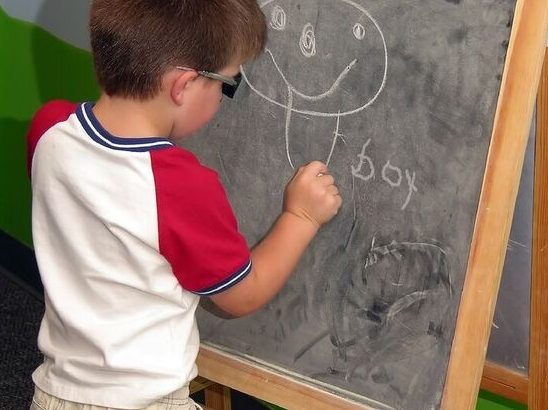Teaching spelling isn’t about phonics so much
Teaching spelling frustrates both teachers and students. Spelling troubles many students, because learning rules of phonics and applying them guarantees they will miss most of their spelling words when tested. Phonics is helpful for early reading; it can’t be trusted for spelling because English spelling is based more on etymology (history of the word and what language it came from) than on phonics. In fact, learning the source of our widely variant spellings can be a delight for students who love words. Our spelling makes sense only after you know that it came to us from Latin, Greek, Anglo Saxon, Norse, Danish, French, German, etc.
Spelling can be harder than reading!
Spelling can be harder than reading for a child with dyslexia. Reading a lot won’t cure the problem because reading and spelling use different neural pathways in the brain. Additionally, the dyslexic child may be thinking in pictures/patterns rather than words. Writing the word over and over won’t help either, especially if the child hates to write.
Ways to help a student with spelling
So what can you do? Lots and lots of things! Here are some of the best ideas I’ve come across. By using a multi-sensory teaching style, a good teacher builds on the student’s strongest mode while supporting the weaker ones. So use as many senses as possible, always emphasizing the mode the student likes best. Avoid questioning the student as though the lesson is a test! Do the activities together or side-by-side and have fun.
Skills needed for accurate spelling:
- Good visual recall (mental image.) Many dyslexic students are good at this, especially if allowed to play with the word image by dressing up the word with art.
- Good auditory discrimination (awareness of letter sounds, syllable sounds, word sounds.) This is usually a challenge for dyslexic students. Don’t rely totally on auditory discrimination, or you’ll frustrate the student terribly.
- Good kinesthetic skill (feel for the movement of the hand while writing or typing.) Dyslexic students may also be dyspraxic, so using very large motions, or even walking the shapes is preferable to handwriting for many students. Starting big and moving to smaller motions works well.
Teaching visual recall for spelling
Show the student a picture then cover it and have them draw or describe as many details as possible.
Now do the same thing with the word to be spelled. Ask questions:
How many letters are in the word?
How many vowels are in the word? (write vowels in a different color to help)
How many tall letters?
How many tail letters?
Name all the letters in the word forward, and backward.
Write the word in the air in cursive.
Have students turn the word into pictures; for example, fill the “W” with water.
Teaching auditory recall for spelling
Clap the syllables of the word.
Play rhyming games.
Explore word families using movable letters such as Scrabble tiles.
Break words into roots, prefixes, and suffixes.
Use multiple forms of the same word or multiple words from the same root.
Listen—is the student repeating the word or sentence accurately?
Teach the child to invent mnemonics to remember spellings: The secretary keeps a secret.
Explain why every syllable has a vowel; be sure the student knows consonants from vowels.
Assign a note to each letter and sing the spelling.
Teaching kinesthetic recall for spelling
Write lightly in cursive so the child can trace over.
Air writing
Sandbox writing
Large writing on white board at arm’s length
Keyboarding
Use a mirror so the student can watch his/her own mouth while enunciating each syllable
One last comment on spelling
Bad spelling indicates absolutely nothing about intelligence, reading comprehension, or general academic ability. It’s a “splinter skill” that must be learned separately from other linguistic skills, so holding a child back because they can’t spell makes no sense, educationally. Likewise, grading on spelling needs to be separated from other writing grades, if grades are used. I personally think grading needs to become extinct while feedback and support become the method of choice! For a shame-free, stress-free spelling curriculum that’s especially good for students with dyslexia, check out Sequential Spelling. My students love it.
By Yvonna Graham, M.Ed.
www.dyslexiakit.net
@GrahamYvonna
